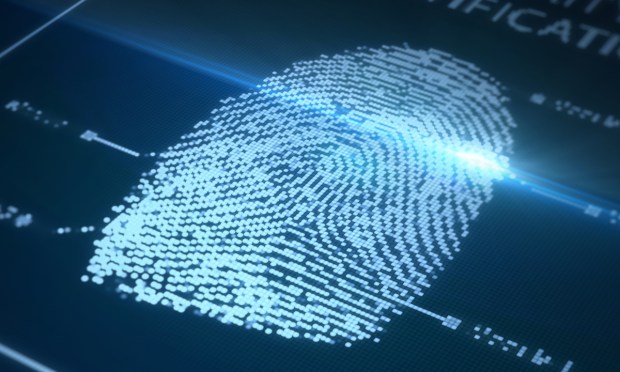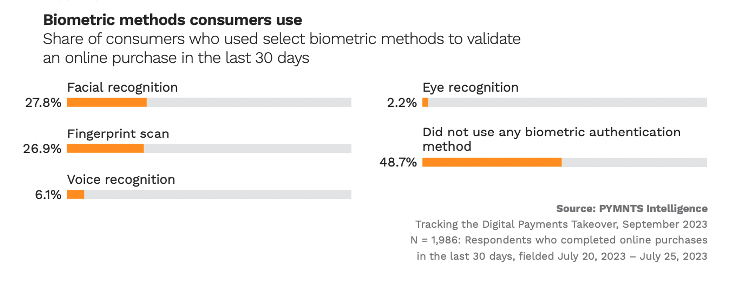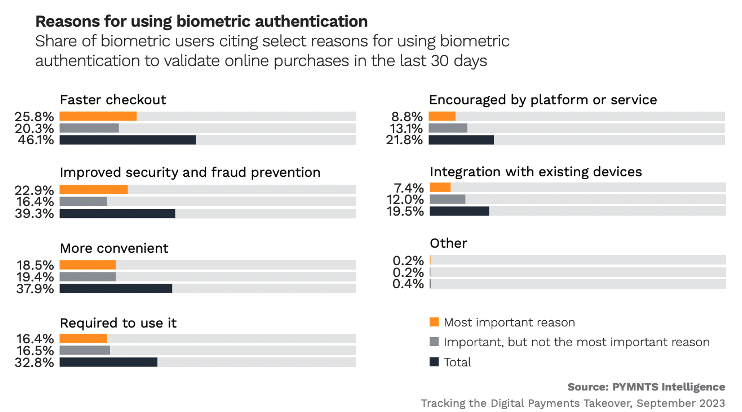Merchants Ramp Up Biometrics Use to Meet Consumer Demand

People are getting more used to logging into their favorite apps on their smartphones using facial recognition or their fingerprints.
This includes using Apple Pay, Google Pay and other payment platforms for their online purchases.
Nearly half of online shoppers in the U.S. use some type of biometric authentication method for purchasing online, and around 15% said they are interested in doing so in the future. Facial recognition and fingerprint scans are the most widely used biometrics methods, with more than 1 in 4 consumers using one of these to validate their online transactions on their smartphones. Because of these preferences, merchants across industries are launching a range of biometrics solutions aimed at satisfying what consumers demand.
These are only some of the insights extracted from the PYMNTS Intelligence study “Tracking the Digital Payments Takeover: Biometric Authentication in the Age of Mobile,” which examined consumers’ increasing reliance on biometric authentication when using mobile devices to shop online, as well as what consumers expect from biometrics and what drives them to use the technology.

The study found that 46% of biometrics users consider faster checkout an important reason for choosing this type of authentication. This means quick access and an agile payment process that can be achieved, for instance, through facial recognition.
For FortressPay, a biometrics solutions developer, paying with a selfie is no longer science fiction. With its new payment suite, FortressPay aims to provide a frictionless customer experience by acquiring capabilities with a biometric checkout solution.
“People use a selfie to unlock their phones multiple times a day, making a payment should be no different,” Fortress Payments CEO Alessandro Chiarini said in December.

The survey also found that 39% of biometrics users chose this method because it is more secure than other authentication alternatives. This is one of the reasons biometric authentication is expanding across industries, from online retail to restaurants, and in the car industry.
Mastercard launched an in-car payment partnership with Mercedes in September. Customers use a fingerprint sensor in their car to make digital payments at more than 3,600 service stations across Germany.
Franz Reiner, board chairman for Mercedes-Benz Mobility AG, said the collaboration was born with the aim to make payments easier for the company’s customers.
“From now on, they can pay their fuel bill directly from their car using their fingerprint — simply, securely and conveniently,” Reiner said.
Thirty-eight percent of consumers choose biometric authentication because it is convenient. Amazon Web Services (AWS) announced at the end of November the launch of Amazon One Enterprise, a contactless security tool designed to grant entry to places like offices, airports, hotels and educational facilities.
Consumers are using biometric authentication more on their mobile devices and in other systems to shop for everything from groceries to travel, as this authentication method provides a secure and convenient way to validate transactions. Merchants that do not support biometric authentication could be losing out on business.
